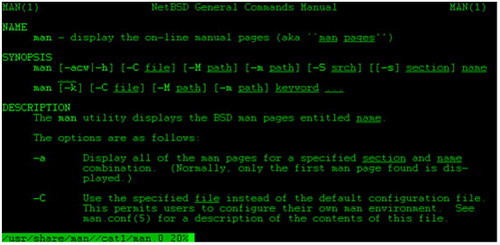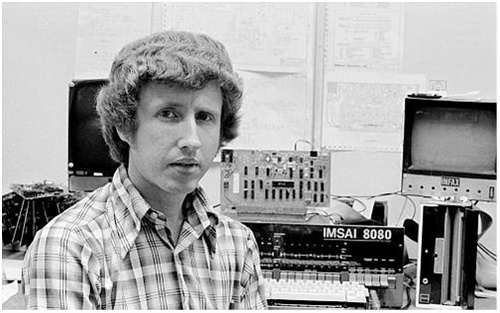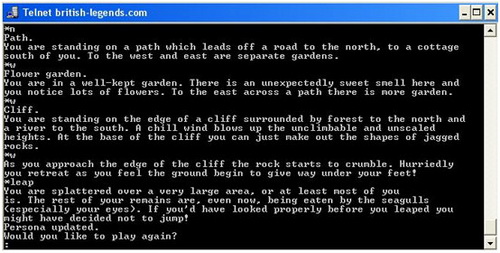How has the Internet evolved?
The Internet has been a familiar word for people of all ages, weaving into each home, becoming an indispensable means of work, daily life and entertainment of millions of millions of people around the world.
However, some of us know the time of formation, the development process to become the global Internet as it is today, its influence in life. This article brings us back in time to return to the early days of the Internet, to learn the important milestones of the Internet from 1960 to today.
Who invented the Internet?
The Internet we know and use today is not just a product of a person. Below is a list of people who helped contribute and develop the Internet.
The original idea of the Internet was recorded by Leonard Kleinrock after he published the first article entitled "Information Flow in Large Communication Nets" - a short line of information in large communication networks. May 31, 1961.
In 1962, JCR Licklider became the first Director of IPTO and launched his vision of a galaxy network. Also, with those ideas of Licklider and Kleinrock, Robert Taylor created the idea of networking that later became ARPANET.
Internet formation process
The Internet as we know it today began to be developed in the late 1960s in California, USA.
In the summer of 1968, the Network Working Group (NWG) held its first meeting, hosted by Elmer Shapiro, at the Stanford Research Institute (SRI). Other attendees include Steve Carr, Steve Crocker, Jeff Rulifson and Ron Stoughton. During the meeting, the group discussed solving problems related to how the servers could communicate with each other.
In December 1968, Elmer Shapiro in conjunction with SRI released a "Study of Computer Network Design Parameters" report - a study of computer network design parameters. Based on this study and previous studies by Paul Baran, Thomas Marill and others, Lawrence Roberts and Barry Wessler have created the interface message processor specifications (Interface Message Processor - IMP). . Bolt Beranek and Newman, Inc. (BBN) was later awarded a contract to design and build subnet IMP.
Here are the main milestones:
1960: AT&T launches the first dataphone and MODEM.
1961: Leonard Kleinrock publishes the first article entitled "Information Streams in Large Media Networks" published on May 31, 1961.
1962:
- Leonard Kleinrock released his research about packetization.
- Paul Baran suggested data transmission using fixed-size message blocks in 1962.
- JCR Licklider became the first Director of IPTO and provided his vision of the galaxy network.
1964:
- Baran publishes the report "On Distributed Communications." in 1964.
- Leonard Kleinrock published his first book about packet networks titled "Communication Nets: Stochastic Message Flow and Design." (Communication grid: Flow of random messages and designs) in 1964.
1965:
- Lawrence G. Roberts with MIT made the first remote dial-up (dial) connection between a Massachusetts TX-2 computer and a Q-32 computer at SDC in California operated by Tom Marill in 1965 .
- Donald Davies coined the term 'Packet'.
1966:
- Lawrence G. Roberts and Tom Marill published an article about their previous success when connecting via dial-up in 1966.
- Robert Taylor joined ARPA and brought Larry Roberts there to develop ARPANET in 1966.
1967:
- Donald Davies created the 1-node (1 node) NPL package network in 1967.
- Wes Clark suggested using a mini computer to switch network packets in 1967.
1968:
- Doug Engelbart publicly performed the Hypertext on December 9, 1968.
- The first meeting of Network Working Group (NWG) was held in 1968.
- Larry Roberts published the ARPANET program plan on June 3, 1968.
- RFP (provisional translation: request for the first tender invitation) for a network was born in 1968.
- UCLA was chosen as the first network node on the Internet today and served as the Msmnt Network Center in 1968.
1969: A year of many remarkable milestones
Steve Crocker released RFC # 1 on April 7, 1969, introduced Host-to-Host and talked about software IMP.
The Internet was first introduced: UCLA (University of California, Los Angeles) released a press release introducing the Internet to the public on July 3, 1969.
First network device: Leonard Kleinrock stands next to IMPOn on August 29, 1969, the first network switch and the first part of the network device called "IMP" (Interface notification processor) is sent. to UCLA. On September 2, 1969, the first data transferred from UCLA server to switch (switch device). The picture below is Leonard Kleinrock next to IMP. On September 2, 1969, the first data was transferred from UCLA server to switch IMP.
Arpanet: Arpanet was operated on the latest packet switching technology at that time. On October 29, 1969 computers at Stanford University and UCLA University (University of California, Los Angeles) were connected through the Arpanet network. Arpanet is regarded as the first network model born on the Internet today. The name ARPA-NET originating from The Advanced Research Project Agency is the organization that sponsors research costs for this program.

First network notice and incident: On Friday, October 29, 1969, at 10:30 pm, the first Internet message was sent from the lab of Leonard KleinRock computer science professor at UCLA, after The second network device is installed at SRI. This connection not only allows for the first transmission, but is also considered the first Internet backbone.
The first message transmitted is "LO", which is an attempt to type "LOGIN" by Charley S. Kline to log in to the SRI computer from UCLA. However, the message cannot be completed because the SRI system fails. Immediately after the incident, the problem was resolved, and he was able to log into the computer.
Unix: Another important milestone of the Internet in the 1960s was the beginning of Unix: the operating system had a tremendous impact on the development of Linux and FreeBSD (the most popular operating systems running web servers). web hosting service today).

CompuServe: The first online commercial service, formed in 1969.
1970:
- Arpanet network: In 1970, an Arpanet network was established between Harvard University, MIT (Massachuset Institute of Technology) and BBN (the company that created the microprocessor interface that computers use to connect connected to the network).
- Steve Crocker and the UCLA team released NCP in 1970.
1971:

Email - email: In 1971, an important event of great significance and becoming the indispensable thing in technology life today is email - email was born. Email was developed by Ray Tomlinson, who suggested using the @ character to separate the username and computer name (later domain name).
Project Gutenberg and eBooks:

Michael Hart and Gregory Newby at the HOPE conference
One of the most impressive developments in 1971 was the beginning of Project Gutenberg. Project Gutenberg targets people who are not familiar with web-based tasks, manipulating Gutenberg as a global effort to make free community books and documents called ebooks and document formats. other electronics.
This project was started when Michael Hart had access to a large amount of computing time with the computer, the number and realization of the future of computers did not stop at the usual computing tasks, now finding information and documents only in the library.
He personally typed the American Declaration of Independence (at the time there was no scanning device or handwriting recognition like today's scanners) and then launched Project Gutenberg to create financial information. documents, documents on paper into electronic formats and can be viewed on computers. This is the cause of today's eBook.
1972:
- Cyclades: In 1972, France also launched its own network and similar Arpanet with Packet switching technology called Cyclades. Then the Cyclades stopped developing, but it pioneered the important idea that the server must be responsible for transmitting data, not its own network.
- The first public demo of ARPANET in 1972.
- Norm Abramson 'Alohanet connected to ARPANET: radio packet network in 1972.
1973:
Trans-Atlantic network and the popularity of email: In 1973, an early leap of the Internet was able to create the Arpanet network with a long way through the Atlantic connecting UCL University (University College of London). That same year, email email became popular and accounted for 75% of the Arpanet network.
TCP was developed: Vint CerfVinton Cerf and Robert Kahn designed TCP in 1973 and then published it with the help of Yogen Dalal and Carl Sunshine in December 1974 in RFC 675. Most people see these two is the inventor of the Internet.
Ethernet formed: Robert Metcalfe developed the idea of Ethernet at Xerox Palo Alto Research Center (PARC).
The first VoIP call was made in 1973.
1974:

The premise of the TCP / IP protocol appears: It can be said that 1974 is a breakthrough year of Internet development history, a proposed proposal to link Arpanet networks together to form a new network called 'inter Network ', there will be no central control and work on a new transmission protocol, this is the premise of the existing TCP / IP protocol to this day.
First commercial network: A commercial version of ARPANET, called Telenet, was introduced in 1974 and is considered the first Internet Service Provider (ISP).
1975:

Email Client software for workstations: With the popularity of email, the first modern email sending / receiving programs were developed by John Vittal, a programmer at the University of Southern California, in 1975 called is MSG. The most advanced function this program has done at the time was to add "Reply" and "Forward" functions to the Email Client.
1977:

Launching computer modem: 1977 is a memorable year in the development of the Internet as we know it today. This is the time that Dennis Hayes and Dale Heatherington released the 80-103A Modem. This version of the modem and their subsequent modems became a popular choice for households, allowing them to connect to the Internet and go online.
In 1978:
Officially created TCP / IP: 1978 was a year of many important milestones, one of which was the appearance of the TCP / IP template. TCP divided into TCP / IP, controlled by Danny Cohen, David Reed and John Shoch to support real-time traffic. The creation of TCP / IP also helped create UDP and was then standardized to ARPANET on January 1, 1983. Today, TCP / IP is still the main protocol used on the Internet.
The release of Bulletin Board System (BBS): Bulletin board system (BBS) is a computer system running software that allows users to connect and log in to systems using terminal software, BBS is developed. in Chicago in 1978.
Spam was born: 1978 was also the year that unsolicited commercial email messages (later known as spam) were sent to 600 Arpanet users in California by Gary Thuerk.
MUD - the first form of multiplayer game: The predecessor of Word of Warcraft and Second Life was developed in 1979 and is called MUD (short for MutiUser Dungeon). MUDs are completely text-based virtual worlds that combine elements of game law, mutual influence, imagination and online chat.
The first computer worm: John Shoch and Jon Hupp at Xerox PARC developed the first worm (computer worm) in 1978.

1979: Usenet was born. In 1979 led the way with the launch of Usenet, created by two graduates. Usenet is an Internet-based discussion system that allows global users to talk about the same topic by making public messages categorized by information groups.
1980: Software requirements. The European Nuclear Research Organization (commonly known as CERN) launches the Inquiry application (written by Tim Berners-Lee), a hypertext application that allows scientists at research labs. Rescue can save software, people and projects using this hypertext (hyperlink).
1981: BITNET was established.
1983: ARPANET standardized TCP / IP in 1983.
1984: DNS was released. Paul Mockapetris and Jon Postel launched DNS in 1984, and introduced the domain name system. 'symbolics.com' - the first Internet domain name - was registered on March 15, 1985 by Symbolics, a Massachusetts computer company.
1986: Eric Thomas developed the first Listserv in 1986. Also in this year NSFNET and BITNET II were created.
In 1988:
- The first T-1 backbone was added to ARPANET.
- Bitnet and CSNET are merged to form CREN.
1989: The first dial-up Internet service provider (ISP), named "The World", was introduced in 1989. "The World" is the first ISP to be used on the Internet. On March 12, 1989, Tim Berners-Lee submitted a proposal for a distributed system at CERN that would later become WWW.
1990:
- In 1990, while working at CERN, Tim Berners-Lee developed HTML, a great contribution to the way we navigate and display the Internet today.
- ARPANET is replaced by NSFNET.
- The first search engine named Archie, written by Alan Emtage, Bill Heelan and Mike Parker at McGill University in Montreal Canada was released on September 10, 1990.
1991: A milestone
- WWW: Tim Berners-Lee introduced WWW to the public on August 6, 1991 and people could start using it on August 23, 1991. We almost all considered the World Wide Web (WWW) as "Internet" or a series of websites are linked to links. The standards and Internet technologies used today are developed by hundreds of people, but without WWW, the Internet will not be as popular as it is today.
- The first site was 'info.cern.ch' developed by Tim Berners-Lee at CERN and published online on August 6, 1991.
- NSF opened the Internet for commercial purposes.
- On December 1, 1991, the first server outside Europe was installed online.
1992:
- Internet Society was founded.
- SFNET upgraded to T-3 axis.
1993:
- On April 30, 1993, CERN released the Web source and made it a public domain. This effect immediately makes Web traffic grow rapidly.
- The White House and the United Nations went online in 1993 and worked for .gov and .org. become the most advanced domain names.
- The first graphical Internet browser: Mosaic 1.0 was the first World Wide Web graphic browser to be developed and was first released on April 22, 1993 by NCSA with the help of Marc Andreessen and Eric Bina. A major competitor of Mosaic is Netscape, another browser released a year later. The Internet browsers we use today (eg Internet Explorer, Chrome, Firefox, etc.), are inspired by Mosaic browser.
1994:
- Netscape (Mosaic Communications Corporation) was discovered by Marc Andreessen and James H. Clark on April 4, 1994.
- Mosaic Netscape 0.9 - the first Netscape browser - was officially released on October 13, 1994. The browser also started using the Internet to work with cookies.
- WXYC (89.3 FM Chapel Hill, NC USA) becomes the first traditional radio station used to broadcast announcements on the Internet.
- Tim Berners-Lee founded and headed W3C (World Wide Web Consortium) in October 1994.
1995: The dot-com boom started
- SSL protocol was developed and introduced by Netscape in February 1995.
- On April 1, 1995, the Opera browser was released.
- The first VoIP software (Vocaltec) was released to allow users to make voice calls over the Internet.
- On August 16, 1995, Microsoft introduced and released the Microsoft Internet Explorer browser.
- On November 24, 1995, HTML 2.0 was introduced in RFC 1866.
- Java and JavaScript: Java (originally called Oak) is a programming language developed by James Gosling and colleagues at Sun Microsystems in 1995. Today, Java is still used to create Internet applications. and other software programs.
JavaScript was developed by Brendan Eich in 1995 and was originally called LiveScript. LiveScript was released with Netscape Navigator 2.0 and renamed to JavaScript with Netscape Navigator 2.0B3 version. JavaScript is an interpreted client-side scripting language that allows web designers to insert code into their website.
1996:
- Telecom Act removed the data network in 1996.
- Macromedia Flash (now called Adobe Flash) was introduced in 1996.
- The first CSS - CSS 1 - was published by W3C in December 1996. In 1996, people sent more e-mail in the United States than postal mail.
- CREN stopped supporting.
1997: Internet2 Group was established. This is also the year that IEEE released 802.11 WiFi standard.
1998: W3C proposed XML on February 10, 1998.
1999:
- Napster began sharing files in September 1999.
- On December 1, 1999, the most expensive Internet domain name - business.com - was sold by Marc Ostrofsky for $ 7.5 million. Later on July 26, 2007, the domain name was sold to RH Donnelley for $ 345 million.
2000: The dot-com bubble started to explode.
2003: On January 7, 2003, members of CREN decided to dissolve the organization. On June 30, 2003, the Safari browser was released.
2004: On November 9, 2004, Mozilla released Mozilla Firefox browser.
2008:
- AOL ended support for Netscape Internet browser on March 1, 2008.
- On December 11, 2008, Google released the Chrome browser.
2009: A pretender Satoshi Nakamoto introduced virtual currency Bitcoin on the Internet on January 3, 2009.
2014: HTML5 programming language was proposed and released by W3C on October 28, 2014.
The above is a fairly broad overview. So who is the main inventor of the Internet? If you have to specify, they will be two people: Vinton Cerf and Robert Kahn. Most people think WWW - later invented by Tim Berners-Lee - is the "Internet", but not really. If you think Al Gore is the inventor of the Internet, Al Gore coined the term Information Superhighway, but he didn't invent the Internet.
See more:
- History of Microsoft Windows operating system throughout the ages
- Linux operating system: A strange development path
- Android operating system history through versions
You should read it
- Internet 25 years old: 25 milestones 'for life'
- 2/3 access on the Internet ... not human
- What is Viettel Sim Internet? Offers of Viettel Internet sim
- The Internet will only be the domestic network of countries in 2014
- How fast should your Internet connection be?
- The Internet is decentralized - something rivaling the Internet we still know, is already here
- 10 ways to protect yourself on the Internet
- 11 people have changed the Internet world
May be interested
- What is Viettel Sim Internet? Offers of Viettel Internet sim
 viettel internet sim appeared on the market is also quite long and has been bought by many users, but now many people still do not know what sim internet viettel is what kind of simulations it has. therefore, the following article will help you answer all concerns about this new viettel sim with many unexpected utilities.
viettel internet sim appeared on the market is also quite long and has been bought by many users, but now many people still do not know what sim internet viettel is what kind of simulations it has. therefore, the following article will help you answer all concerns about this new viettel sim with many unexpected utilities. - The Internet is decentralized - something rivaling the Internet we still know, is already here
 people call the scattered internet a kind of digital garden, from which we can regain the freedom and prestige of the early internet.
people call the scattered internet a kind of digital garden, from which we can regain the freedom and prestige of the early internet. - The Internet will only be the domestic network of countries in 2014
 one of the most important features of the internet is global, but it is possible that in 2014, the global internet will be replaced by individual national networks, restricting access to foreign websites.
one of the most important features of the internet is global, but it is possible that in 2014, the global internet will be replaced by individual national networks, restricting access to foreign websites. - 10 cities with the fastest internet speeds in the world
 nowadays, the need for super fast internet connection has become essential all over the world.
nowadays, the need for super fast internet connection has become essential all over the world. - How fast should your Internet connection be?
 today, with the development of technology, the speed of network systems such as fiber and 5g can easily reach gigabit per second, but in fact, how much bandwidth do we really need?
today, with the development of technology, the speed of network systems such as fiber and 5g can easily reach gigabit per second, but in fact, how much bandwidth do we really need? - Warning: Global Internet may be interrupted in the next 48 hours
 the internet and digital internet corporation (icann) will make changes to the security keys for dns (domain names) for maintenance and this may cause the global internet to have connectivity problems in about 48 coming.
the internet and digital internet corporation (icann) will make changes to the security keys for dns (domain names) for maintenance and this may cause the global internet to have connectivity problems in about 48 coming. - 10 ways to protect yourself on the Internet
 the growth of social networks like facebook or google+ has created a huge gold mine for criminals. even if users have customized privacy settings carefully, they can still be attacked by hackers - especially if they allow social networking applications to access their personal information.
the growth of social networks like facebook or google+ has created a huge gold mine for criminals. even if users have customized privacy settings carefully, they can still be attacked by hackers - especially if they allow social networking applications to access their personal information. - Netizens will 'cry again' because the Internet is fluttering
 a few months ago the internet in vietnam was in a state of flutter due to the breakdown of the sea cable. although this cable has been repaired, it is possible that in the coming time, vietnamese internet users will experience an unpleasant phen.
a few months ago the internet in vietnam was in a state of flutter due to the breakdown of the sea cable. although this cable has been repaired, it is possible that in the coming time, vietnamese internet users will experience an unpleasant phen. - At the end of 2014, the world had 3 billion Internet users
 the international telecommunication union (itu) released new statistics showing that by the end of 2014 there will be nearly 3 billion internet users, of which two thirds come from developing countries.
the international telecommunication union (itu) released new statistics showing that by the end of 2014 there will be nearly 3 billion internet users, of which two thirds come from developing countries. - [Infographic] How does the Internet work?
![[Infographic] How does the Internet work?](https://tipsmake.com/img/no-image-80-80.png) the curiosity of our people often reaches far away to the deep-sea mysteries or in the vast universe. but in our daily lives there are things that always contain mysteries that we don't pay attention to, the internet is a typical.
the curiosity of our people often reaches far away to the deep-sea mysteries or in the vast universe. but in our daily lives there are things that always contain mysteries that we don't pay attention to, the internet is a typical.









![[Infographic] How does the Internet work?](https://tipsmake.com/data/thumbs_80x80/[infographic]-how-does-the-internet-work_thumbs_80x80_nTakpDMti.jpg)
 6 things to know about IoT security
6 things to know about IoT security Will Samsung Galaxy Note 9 replace computers?
Will Samsung Galaxy Note 9 replace computers? These are the reasons you should remove CCleaner on Windows right away
These are the reasons you should remove CCleaner on Windows right away Top 3 technology trends in 2018, which technology will change the game?
Top 3 technology trends in 2018, which technology will change the game? The 10-year-old MacBook is still not too late to make the MacBook great as it was
The 10-year-old MacBook is still not too late to make the MacBook great as it was How has Hotmail forever changed Microsoft and the entire email world?
How has Hotmail forever changed Microsoft and the entire email world?